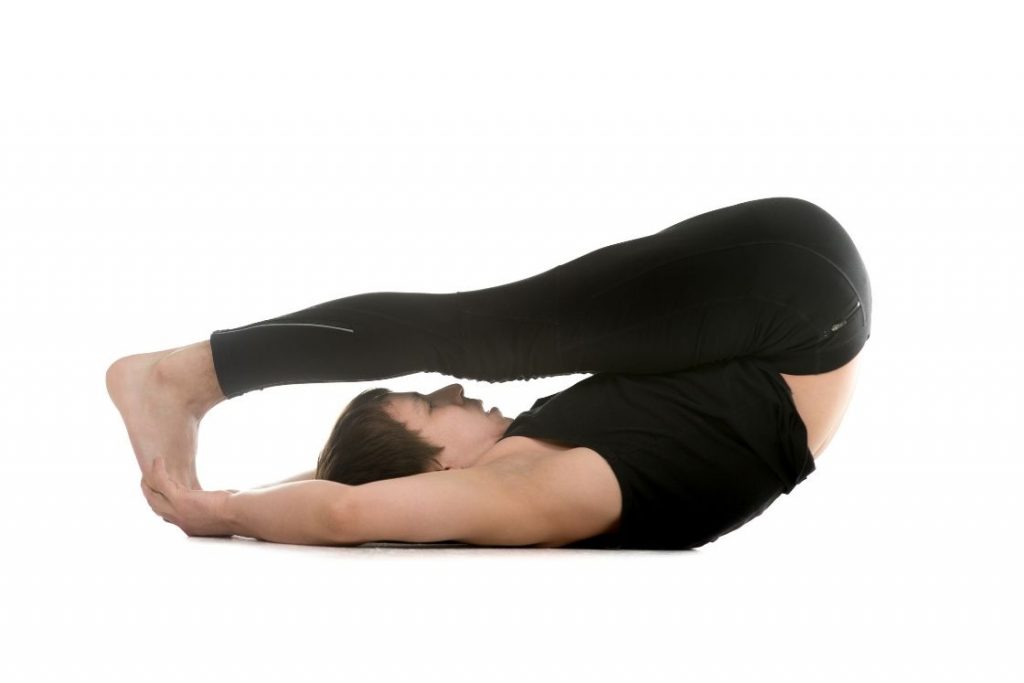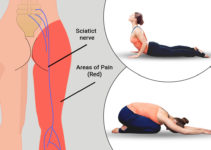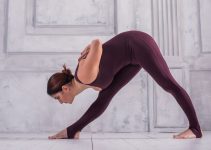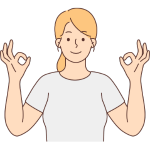
| Sanskrit Pronunciation | Supta Paścimottānāsana (सुप्ता पश्चिमोत्तानासन) soup-tah pah-shee-mote-tahn-ah-sah-nah |
| Common | Reclining Stretch of the West Pose, Lying Down Westward Yoga Pose, Urdhva Mukha paschimottanasana |
| Type | Reclined, Forward Bend |
| Level | Intermediate |
| Stretches | Lower back, Calf, Hamstrings, Shoulders |
| Strengthens | Back Muscles, Core, Arms, Ankles |
Supta Paschimottanasana is a supine variation of the seated forward bend pose. It’s performed lying down in the back position. This posture adequately stretches hamstring muscles.
The name “Supta Paschimottanasana” is derived from the Sanskrit words supta means “reclined”, or “Supine” paschim means “west” (referring to the back of the body), uttana means “intense stretch,” and asana means “pose.” Because this pose is performed lying on the back, it’s also called Lying Down Westward Yoga Pose.
In this pose, the practitioner lies on the back and folds the hips such that the straight legs lift upwards and begin to fall toward the forehead, while the hands grip the big toes.
This is the gentlest of the forward bends, making it ideal for yogis with back problems. The ground forms a base in this pose, relieving strain on the spine and permitting gravity to intensify the stretch.
Step-by-step Instructions
- Lie down on your back with your knees bent and feet placed on your yoga mat.
- Bend your knees to the chest and straighten your lower legs so that the soles of the feet are facing upwards. Place your hands on the back of your knees.
- Pull the lower legs towards the back, while sliding your hands upwards, till your feet are behind your head. Hold your toes or the arch of your feet with your hands.
- Rollback gently so that the top of the shoulder blades rests on the mat.
- Push out from your heels, toes, and toe ballpoints to keep your legs straight.
Hold this pose for at least 30 seconds to 1 minute. Breath normally while holding the pose. With the exhalation, you can push your legs further down to deepen the pose.
To come out of the pose, first, bring down your hips. Place your hands near the knees for support and bend your legs. Lastly, keep your hands on the back of the thighs and slowly place your feet back on the ground before straightening them out.
Beginner’s Tips
Supta paschimottanasana should first be learned and performed under expert supervision and guidance before practising it at home.
While bending from the hips, after bringing your knees to the chest, you can put a bolster, yoga block, or cushion near your tailbone for support to your lower back and hips.
If you cannot fully bring your legs to the back of your head, do not force your body. Start by bringing the legs halfway and use a strap to gradually achieve the leg positioning. Keep your hands near the back of the knees to support holding your legs in the halfway position.
Place a folded blanket in a way that provides a cushion to the neck and shoulder blades.
Put a chair behind your head to place your feet if you are unable to bring your feet completely towards the back.
Benefits
Stretching of the hamstrings and calves, strengthening the arms and shoulders, improving the flexibility of the hips, and spinal alignment, are some of the common benefits of supta paschimottanasana. Stretching and strengthening the legs, arms and back helps in toning the muscles and preparing the body for more challenging poses.
Some of the common benefits of this pose are as follows:
- The muscles of the lower back and hamstrings get a good stretch.
- It’s a great asana to align the bones in your spine and around your shoulders.
- It aids in toning and shaping the leg muscles by stretching the calf and thigh muscles.
- It removes excess fat by toning the arms, neck, shoulders, legs, hips, and lower back.
- Supta paschimottanasana improves the respiratory system due to the slight pressure on the chest.
- It stimulates the reproductive, digestive, and pelvic organs, improving their overall function.
- The process of detoxification gets improved as it refines the digestion process and reduces stomach problems like constipation.
- The intensity of menstrual cramps can be reduced if this pose is practiced before the menstrual cycle.
- It helps in reducing mild symptoms of sciatica.
- It serves as a restorative pose as it cools the body, stabilizes the breathing and heart rate, and calms the mind for meditation.
- Stress, tension, and exhaustion can be effectively reduced through this pose.
Precautions
Take precautions while performing supta paschimottanasana in the following conditions:
- In case of injury or recent surgery in hips, back, spine, shoulders, neck, or legs, avoid this pose.
- Pregnant and menstruating women should also not practice this pose.
- People suffering from slipped disc, hernia, sciatica, lumbar spondylitis, or some gastrointestinal issues should either avoid or proceed with extreme caution.
- Asthma, cervical pain, vertigo, or blood pressure patients should consult an expert before starting this pose.
Preparatory Pose
- Supine Spinal Twist (Supta Matsyendrasana)
- Happy Baby Pose (Ananda Balasana)
- Wind Relieving Pose (Pavanamuktasana)
- Bridge Pose (Setu Bandha Sarvangasana)
- Reclining Hand-to-Big-Toe Pose (Supta Padangusthasana)
Follow-up Poses
- Plough Pose (Halasana)
- Ear Pressure Pose (Karnapidasana)
- Shoulderstand (Salamba Sarvangasana)
- Headstand (Sirsasana)
- Legs-up-the-wall Pose (Viparita Karani)
- Corpse Pose (Savasana)
Conclusion
Supta Paschimottanasana is a great asana to focus on stretching, strengthening, and toning the entire back of the leg. In this pose, your entire lower body gets the attention while your back muscles and core work to maintain your posture. Thus, your entire body is getting stimulated and engaged at the same time.




 Oct 24th to 30th
Oct 24th to 30th Learn Mudras
Learn Mudras  Deepen Your Practice
Deepen Your Practice  Find Inner Peace
Find Inner Peace